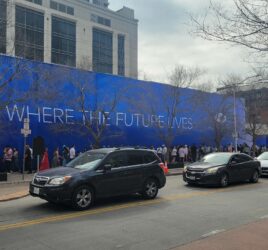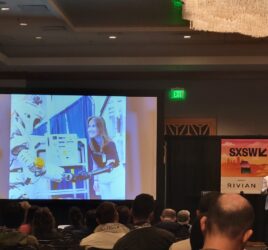
How I Used AI During My Job Interview Process
TL; DR
AI as Strategic Analysis Partner: I used Claude before and after my job interview to help synthesize complex organizational information into actionable strategic insights. The key was treating it as a collaborative analytical process, not a magic answer generator.
Practical Outcome: I went from scattered interview notes from 18 people and job descriptions to a clear strategic understanding of:
- What the role is vs. what the job description suggests
- Who the key stakeholders are and why
- What success looks like in Year 1
- How to approach the first 90 days realistically
I sent that document to the organization’s head so they could see how I understood the job, what strategic metrics I saw for measuring success in the first year, and the organizational leaders I thought I would need to make this happen.
The Job Interview
I was a finalist for Director of Digital & Editorial Operations in a large, 50+ person department. I had interviewed for another position in the same organization a few weeks before, so I had many notes about its function. But this Operations role meant interviewing with a new group of people.
I faced three questions going into that day of interviews:
- How do I synthesize all this information to understand the job?
- How do I understand the issues in the organization? and
- What success metrics might be expected for the position?
Here is how I used Claude Projects to help me prepare for my interviews and synthesize what I learned afterward.
First, I had 14 back-to-back interviews from 9 a.m. to 330 p.m., which meant I had very little time for preparation between conversations. I wanted to create a simple biographical sketch document for each person, organized by interview time, that helped me understand who I was speaking with.
Second, after those interviews, I wanted to synthesize all my information, merging the information from the job description with all the interviewers’ comments about the job and organization into a more concrete job description.
 Before the Interview: Create a Personnel Biographies Document
Before the Interview: Create a Personnel Biographies Document
Since this job requires working across departments, my day included interviews with directors and representatives from six of the ten operational groups. I wanted to make sure I was asking the right questions with each group, so I built a single document with biographies of each cluster. I created a Google Doc that I could open on my iPad. (I also had a printed copy of the document just in case!)
I created that document in less than an hour using Claude. Here is how.
Step 1: Create the List
- I began with a specific list of the names of the people I’d be interviewing with in this round.
- I specified exactly what information I wanted: Name, Title, Reporting Structure, Career Summary
Step 2: Leverage AI for Initial Research
- I asked Claude to search for each person using web search capabilities, limited to the organization’s websites
- Initial searches found basic titles and some career information for most individuals
Step 3: Identify Information Gaps
- I recognized when information was incomplete, and I looked for other public work information (e.g., a new employee wasn’t found initially)
- I noted which profiles lacked detail about career progression or reporting structures
Step 4: Supplement with LinkedIn Data
- Claude couldn’t access LinkedIn directly:
- Visit each person’s LinkedIn profile
- Paste this information into the chat for Claude to process
- This provided much richer detail, including:
- Complete work history with dates
- Educational background
- Skills and accomplishments
- Personal summaries and career highlights from LinkedIn and portfolio sites (if publicly available)
Step 5: Organize Information Systematically
- I provided LinkedIn/portfolio data in batches, keeping the process manageable
- I indicated which information belonged to which person
- I maintained the same format throughout for consistency
Step 6: Create a Living Document
- I asked Claude to create an artifact (a fancy AI-name for a structured document) that could be easily updated and pasted into a Google Doc
- As new information came in, I had Claude update specific sections rather than rewrite everything
- This approach allowed for iterative improvements until I had all the information I wanted
Step 7: Quality Control
- I reviewed the compiled information
- I asked clarifying questions/prompts to ensure accuracy
- I made sure all profiles were included, even if some had limited information
Key Takeaways for Pre-Interview Preparation
1. Use Multiple Sources
- Start with official websites and public searches
- Supplement with professional networking sites like LinkedIn
- Don’t rely on a single source
2. Be Systematic
- Create a checklist of people and information needed
- Track what’s been found and what’s missing
- Use consistent formatting
3. Work Iteratively
- Start with basic information
- Layer in more detail as you find it
- Update rather than restart
4. Handle Limitations Creatively
- When Claude couldn’t access certain sites, I manually gathered that data
- I copy/paste relevant information to feed into your compilation process
5. Maintain Consistency
- I used the same organizational categories and formatting for each person
- I had Claude note when information wasn’t available, rather than leaving sections blank

After the Interview: Create a Strategic Job Overview & Analysis
Once the interviews were complete, I needed to synthesize all the information in a way that gave me insight into the job, what the description said, and what the people who worked there thought the job should be. At this point, I had:
- A detailed job description
- Interview notes from 18 different stakeholders (from 2 sets of job interviews)
- Organizational charts with 90+ stakeholders inside and outside the organization
- Competing perspectives on what the role should accomplish
I created the twelve-page overview and analysis using Claude in less than two hours. Here is how.
Step 1: Data Upload and Initial Synthesis
- I uploaded the job descriptions, interview notes, and organizational structure to the Project Knowledge section
- I asked Claude to analyze the role based on interview feedback using a variety of prompts aimed at uncovering patterns from what interviewers told me
- I had Claude map each person’s comments to specific organizational challenges so I could see which departments (and people) identified which problems
Key insight: The AI identified 12 distinct problem areas the role needed to address, according to those I interviewed with. I had a series of questions I asked each group. The first three were always the same: “What do you think this job solves?”, What do you think a successful first year would look like?”, and “What are the pain points?” Those questions helped me get data not only about the job, but also about conflicts in the organization.
Step 2: Organizational Mapping
- I provided a complete staff directory (90+ people)
- I asked Claude to map interview participants to organizational teams
- I had Claude create an organizational map of who I’d manage directly vs. coordinate with operationally
Key insight: This helped me visualize how units worked together and what the “silos” everyone spoke about functionally looked like. I could also see which problems each silo identified
Step 3: Stakeholder Power Analysis
- I asked Claude to identify the most strategically important relationships based on the organizational chart and the interview notes
- I asked Claude to map who has operational influence
- I asked Claude to map informal power networks based on tenure at positions (when listed in the bio), role history, and interview notes
Key insight: One of the questions I asked people was, “Who is good at getting things accomplished?” and “Who do you go to when you hit a roadblock?”
Step 4: Reality-Testing Initial Plans
- I asked Claude to create an aggressive first-year roadmap and OKRs
- I prompted Claude: “This feels too aggressive for the organization’s size and culture.”
- Iteratively refined to account for the organization’s constraints
Key insight: Large organizations don’t move quickly. Understanding how all the parts move is better before beginning to reshape operations.
Step 5: Process Validation and Gap Identification
- I asked Claude to fact-check my synthesis against source materials (to make sure it wasn’t hallucinating or pulling information from other places)
- I told Claude to highlight areas where it had no information so I could add that information myself
- I pointed out missing elements (onboarding time, metrics infrastructure)
- I corrected assumptions about existing systems and capabilities
Key insight: You know more about how work structures operate. Make sure you are accounting for all of that in your mapping.
Key Takeaways for Using AI
Once each of these documents was finished, I spent about 30 minutes reading, editing, and clarifying points within the document. Then, I let my partner read the documents, since her work involves operations and project management. Once she gave me her feedback, I gave the final document another editing pass and let it sit for a day before giving it a final read.
After that, I sent the document to the department manager to let them know what I learned about the job and how I would approach the first 90 days and the first year. This gave us a concrete place to begin conversations. I also told them that if they offered the position to somebody else, they could pass along my insights to that person.
So, here’s what I learned in this process.
- AI strength: Pattern recognition across large amounts of unstructured data
- Human strength: Context, domain knowledge, reality-testing, strategic thinking
- Combined: Comprehensive analysis that’s both thorough and realistic
1. Iterative Refinement
- I didn’t accept the first response. I challenged, corrected, and refined
- Each iteration incorporated new information or constraints
- I iterated multiple versions of the analysis, adding layers and constraints each time
2. Domain-Specific Feedback
- I provided context about the organization’s culture (from interview questions I asked)
- I corrected Claude’s assumptions about timelines
- I added realistic constraints that Claude couldn’t know
3. Comprehensive Data Input
- What I used for all of this: Job descriptions + interview notes + organizational structure + staff directory
- I planned on getting multiple perspectives from different stakeholders. My data collection was specific.
- I structured my questions to understand the formal and informal organizational information, which I planned ahead of time
4. Strategic Prompt Questioning
- I used my knowledge of the job and my experience with operations to course-correct assumptions Claude was making.
Do:
- Upload comprehensive source materials: the more context, the better
- Challenge initial outputs: AI often makes assumptions that need correction
- Iterate based on domain knowledge: you know things AI doesn’t
- Ask specific validation questions: “Does this align with the source material?”
- Provide realistic constraints: organizational culture, timelines, resources
Don’t:
- Accept the first response as final: it’s a starting point for analysis
- Assume AI understands your specific context: bring your experience to the prompts
- Let AI make strategic decisions: use it for pattern recognition and synthesis
- Skip fact-checking against source materials: AI can miss details
AI use in this post
I used my Claude projects to help create this post. I asked it to make “step-by-step instructions” for the pre-interview and post-interview projects. I took those steps and edited them into the larger post. The writing is mine, but Claude helped synthesize and organize the steps. I also used Grammarly to copyedit this piece, using its Chicago Manual of Style setting and my style guide additions, which I’ve made over the last few years.
Photo Credits
Features Image: Photo by Nastuh Abootalebi on Unsplash
Interview Image: Photo by Solen Feyissa on Unsplash
Strategic Plan Image: Photo by Phil Desforges on Unsplash



